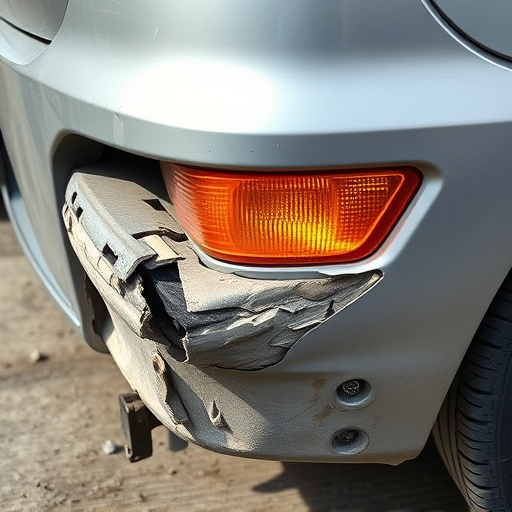Ultrasonic thickness gauges utilize high-frequency sound waves to non-destructively measure material thickness in metals, plastics, and composites. Essential for auto repair, restoration, and manufacturing quality control, these gauges ensure structural integrity and adherence to specifications. Accurately detecting subtle thickness changes, they're used for tire, panel, brake pad, and engine block assessments, facilitating timely replacements for optimal vehicle performance.
Ultrasonic thickness gauges have transformed various industries by offering a non-invasive method to measure material depth. These advanced tools utilize sound waves, sending high-frequency acoustic pulses through materials and measuring the time it takes for them to reflect back. This technology enables technicians to determine the thickness of materials with precision, making it invaluable in sectors such as manufacturing, construction, and quality control. By understanding the principles behind ultrasonic thickness gauges, we can appreciate how they’ve become indispensable for ensuring accuracy and efficiency.
- Understanding Ultrasonic Thickness Gauges: Principles and Technology
- The Role of Sound Waves in Measuring Material Depth
- Applications: How Technicians Use Ultrasonic Measures in Various Industries
Understanding Ultrasonic Thickness Gauges: Principles and Technology

Ultrasonic thickness gauges operate by transmitting high-frequency sound waves into a material and measuring the time it takes for those waves to reflect back. This technology is built on principles of electromagnetism, specifically utilizing the speed of sound in various materials. The device sends an ultrasonic pulse through the surface of a material, be it metal, plastic, or composite, and calculates its thickness based on the round-trip travel time of the wave.
This method is particularly valuable in industries like classic car restoration and vehicle body shops where precise measurement of material thickness during frame straightening or repair is essential. The non-destructive nature of ultrasonic thickness gauges makes them indispensable tools for quality control, ensuring that repairs maintain the structural integrity and original specifications of components, be it a vintage car’s chassis or a modern vehicle’s panel.
The Role of Sound Waves in Measuring Material Depth

Sound waves play a pivotal role in the operation of ultrasonic thickness gauges, enabling precise measurements of material depth. These high-frequency acoustic waves are transmitted through a test sample and reflected back when they encounter a change in density or structure. By analyzing the time it takes for the sound waves to travel from the gauge to the surface and back, technicians can accurately determine the thickness of materials, including those used in auto glass repair, automotive repair services, and vehicle body shop applications.
In auto glass repair, for instance, ultrasonic thickness gauges help ensure that replacement windows have the correct specifications, maintaining the structural integrity and safety of the vehicle. Similarly, in automotive repair services and vehicle body shops, these tools are invaluable for assessing damage to components like panels and bodies, facilitating accurate repairs and ensuring a seamless finish.
Applications: How Technicians Use Ultrasonic Measures in Various Industries

Technicians across various industries leverage ultrasonic thickness gauges as a powerful tool for precise measurements. In the realm of manufacturing, these devices play a pivotal role in quality control, ensuring that products meet specific thickness standards. For instance, in the production of plastic components or composite materials, ultrasonic thickness gauges enable technicians to quickly and accurately verify dimensional integrity, thereby enhancing overall product quality.
Beyond manufacturing, ultrasonic measures find extensive applications in fleet repair services and tire services. When it comes to vehicle maintenance, these gauges are invaluable for assessing the condition of vehicle parts, including tires and panels. In automotive repair services, technicians use them to detect subtle thickness variations in components like brake pads or engine blocks, facilitating timely replacements and ensuring optimal vehicle performance.
Ultrasonic thickness gauges, powered by sound wave technology, have become indispensable tools for technicians across diverse industries. By leveraging high-frequency sound waves, these devices non-invasively measure material depth with remarkable accuracy and efficiency. From manufacturing and construction to quality control and research, ultrasonic thickness gauges offer a reliable method for monitoring material properties, ensuring precision, and driving innovation in various applications.














